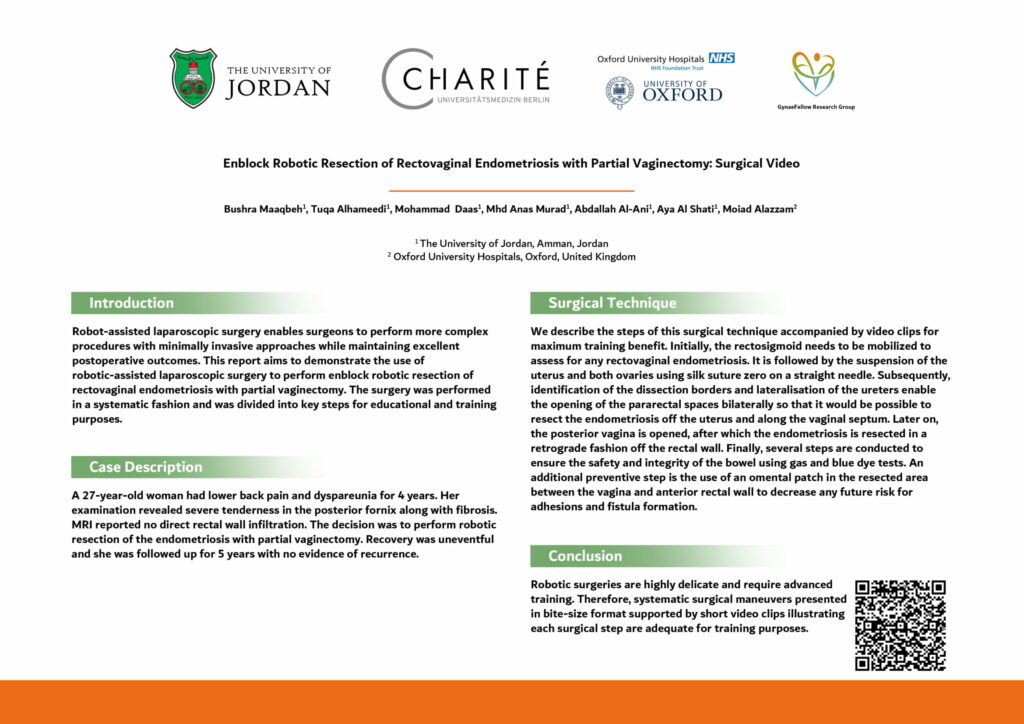Enblock Robotic Resection of Rectovaginal Endometriosis with Partial Vaginectomy: Surgical Video
Authors:
Bushra Maaqbeh1, Tuqa Alhameedi1, Mohammad Daas1, Mhd Anas Murad1, Abdallah Al-Ani1, Aya Al Shati1, Moiad Alazzam2
Affiliations:
1 The University of Jordan, Amman, Jordan
2 Oxford University Hospitals, Oxford, United Kingdom
Abstract
Introduction
Robot-assisted laparoscopic surgery enables surgeons to perform more complex procedures with minimally invasive approaches while maintaining excellent postoperative outcomes. This report aims to demonstrate the use of robotic-assisted laparoscopic surgery to perform enblock robotic resection of rectovaginal endometriosis with partial vaginectomy. The surgery was performed in a systematic fashion and was divided into key steps for educational and training purposes.
The case:
A 27-year-old woman had lower back pain and dyspareunia for 4 years. Her examination revealed severe tenderness in the posterior fornix along with fibrosis. MRI reported no direct rectal wall infiltration. The decision was to perform robotic resection of the endometriosis with partial vaginectomy. Recovery was uneventful and she was followed up for 5 years with no evidence of recurrence.
Surgical technique:
We describe the steps of this surgical technique accompanied by video clips for maximum training benefit.
Initially, the rectosigmoid needs to be mobilized to assess for any rectovaginal endometriosis. It is followed by the suspension of the uterus and both ovaries using silk suture zero on a straight needle. Subsequently, identification of the dissection borders and lateralisation of the ureters enable the opening of the pararectal spaces bilaterally so that it would be possible to resect the endometriosis off the uterus and along the vaginal septum. Later on, the posterior vagina is opened, after which the endometriosis is resected in a retrograde fashion off the rectal wall. Finally, several steps are conducted to ensure the safety and integrity of the bowel using gas and blue dye tests. An additional preventive step is the use of an omental patch in the resected area between the vagina and anterior rectal wall to decrease any future risk for adhesions and fistula formation.
Conclusion
Robotic surgeries are highly delicate and require advanced training. Therefore, systematic surgical maneuvers presented in bite-size format supported by short video clips illustrating each surgical step are adequate for training purposes.

